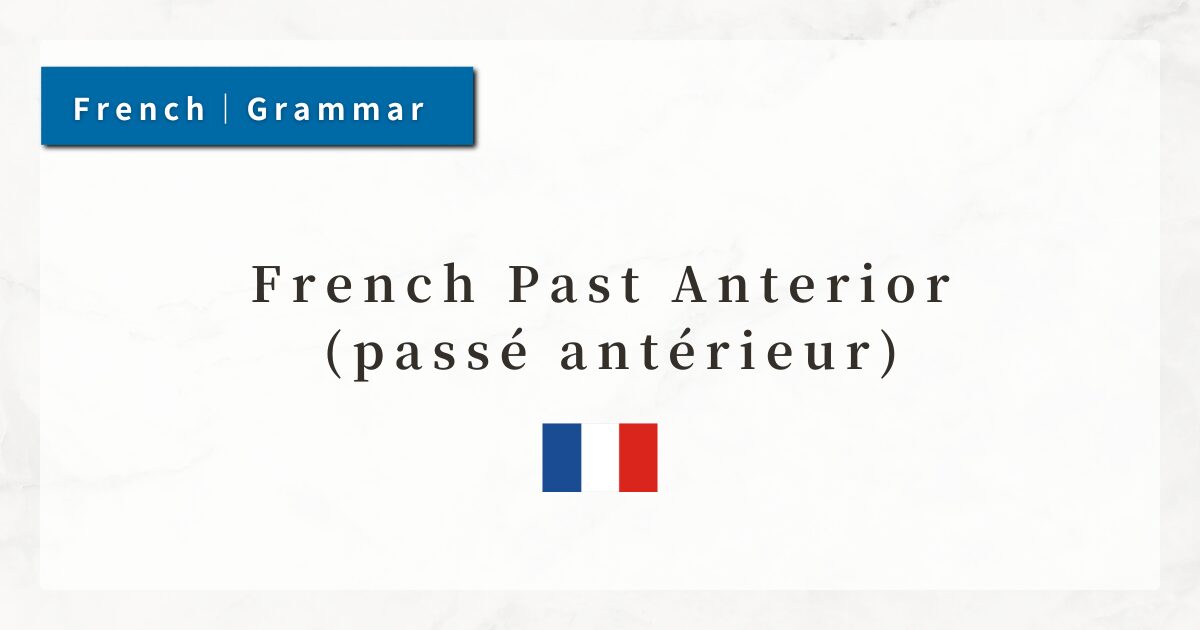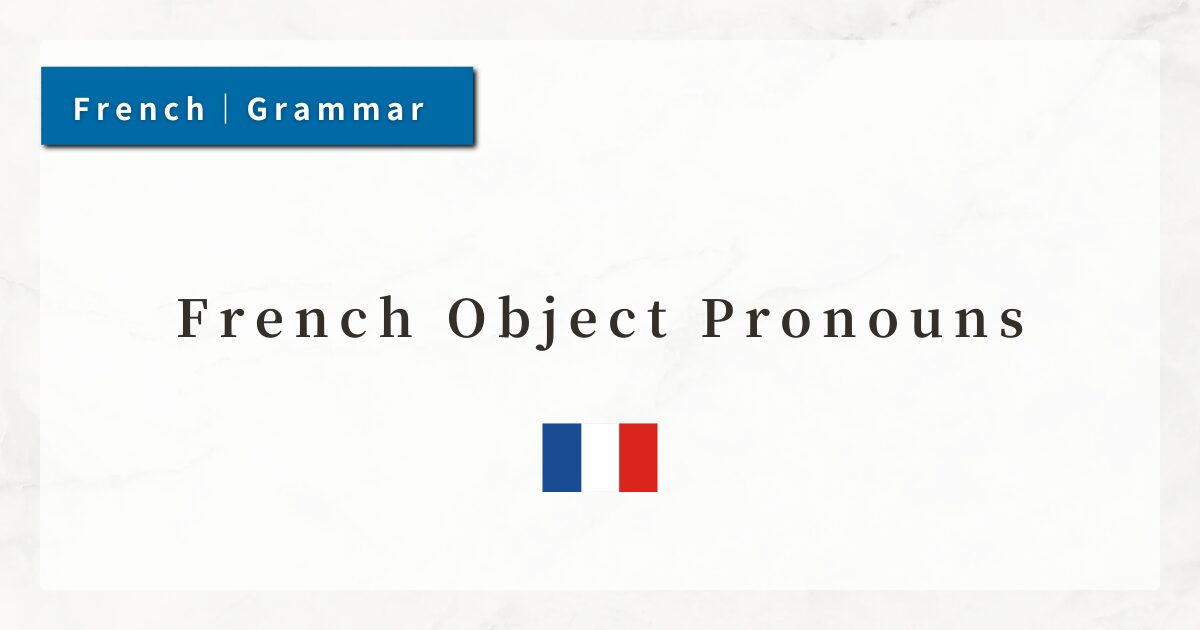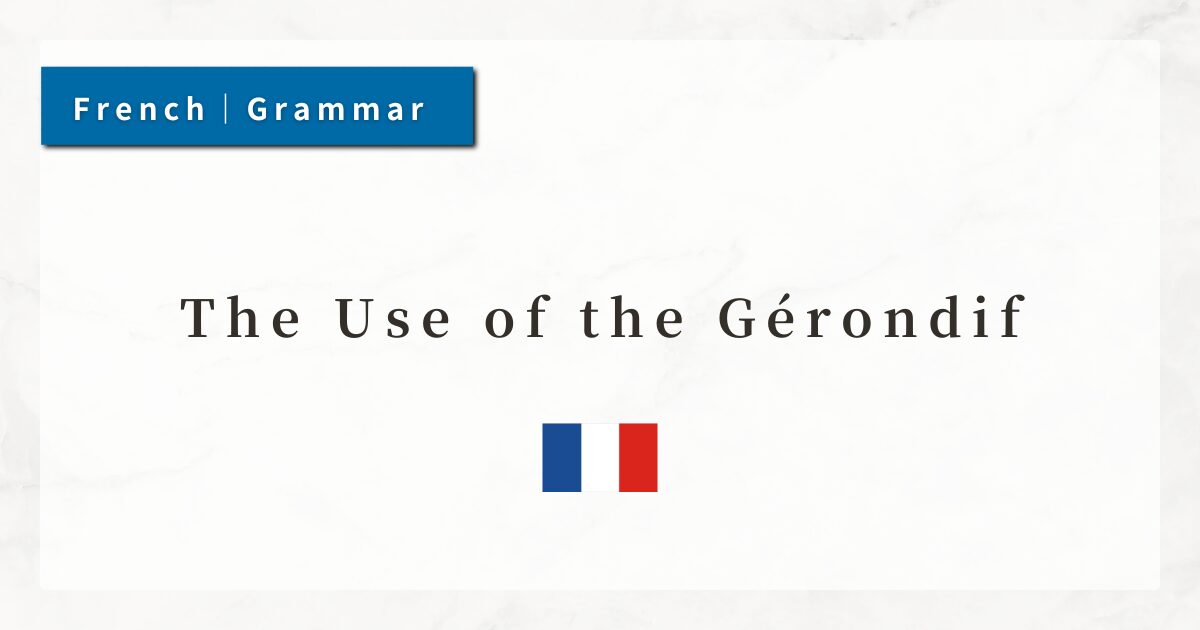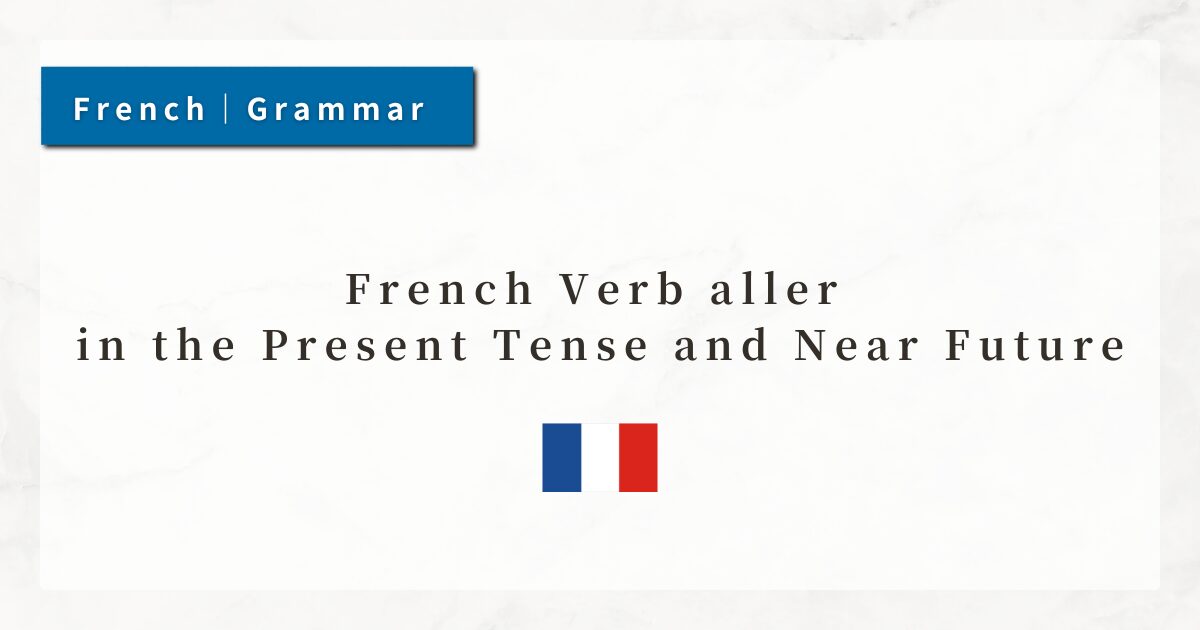#69 French Past Anterior (passé antérieur) | Conjugation Rules and Usage

The past anterior is a tense used to describe an action that had already been completed before another event in the past.
It has a meaning close to the pluperfect (plus-que-parfait), which is used in spoken French, but the past anterior corresponds to a literary form of the pluperfect. For this reason, it appears mainly in literature, historical writing, and formal narration.
In this lesson, I will explain the structure, usage, and important points of the past anterior as a tense reserved for written French.
1. Structure of the Past Anterior
The past anterior is a compound tense primarily used in literature and historical accounts. It expresses an event that was completed before another event in the past.
It is formed with:
the simple past (passé simple) of avoir or être + past participle
- J’eus mangé.
(I had finished eating.) - Il fut parti.
(He had already left.)
The choice of auxiliary (avoir or être) follows the same rules as in the passé composé and the pluperfect: verbs of movement (aller, venir, naître, mourir, etc.) and reflexive verbs use être.
2. Clarifying the Sequence of Past Events
The past anterior is used to show that one event was completed before another past event.
- Quand il arriva, elle eut déjà terminé son travail.
(When he arrived, she had already finished her work.)
Here, “finishing her work” happened before “his arrival.” The past anterior marks this sequence clearly.
3. Use in Literature and Historical Narration
The past anterior frequently appears in novels, historical texts, and formal writing to describe events with precision.
- Après qu’il fut parti, le silence régna dans la maison.
(After he had left, silence reigned in the house.)
The past anterior shows that “his departure” was completed before “the silence” took over.
4. Difference Between the Past Anterior and the Pluperfect
Both tenses express an action completed before another past event, but their contexts of use differ:
| Item | Past Anterior | Pluperfect |
|---|---|---|
| Structure | Simple past of auxiliary + past participle | Imperfect of auxiliary + past participle |
| Usage | Written French (literature, historical accounts) | Spoken French, everyday language |
| Nuance | Formal, narrative | Natural, conversational |
| Frequency | Mostly in reading, rare in modern speech | Used in both speech and writing |
The past anterior is not used in spoken French today. However, it often appears together with the passé simple in literature, so learning them together will help comprehension.
5. Summary
- The past anterior is formed with “the simple past of avoir/être + past participle”.
- It has the same meaning as the pluperfect: an action completed before another past event.
- Its use is limited to literary, historical, and formal writing.
- In spoken French, the pluperfect is used instead.
- To master the past anterior, first become familiar with the simple past forms of avoir and être.




